Our time in Irkutsk began with a nervy encounter as we exited the train station. Exhausted from the long-haul train journey, I committed a classic tourist faux-pas and unflinchingly agreed to jump into a stranger’s unmarked vehicle as soon as he shouted “taxi!”
I had realized my mistake by the time we finished the five-minute trip to the hotel and he tried to charge me 2,000 RUB ($40), and there was nothing we could do besides point at our barren wallets in which we only had about 200 RUB ($4).
We bickered back-and-forth for a while, and eventually he let us out of the car and drove off without collecting any money at all. I’m not sure if he felt insulted by the idea of being paid a mere 200 RUB or what, but I’m just grateful things ended the way they did, since they could’ve ended in a whole lot of other ways. Not my brightest moment!
Anyway, we stayed at the Courtyard by Marriott Irkutsk City Centre during our time in town. I won’t be reviewing it, since most Courtyards around the world are pretty similar. They have decent guest rooms that are usually nothing special, and also not much in the way of benefits for elite members – you’d be lucky to get a $10 food & beverage credit at a Courtyard hotel, and this one didn’t even provide us with that.
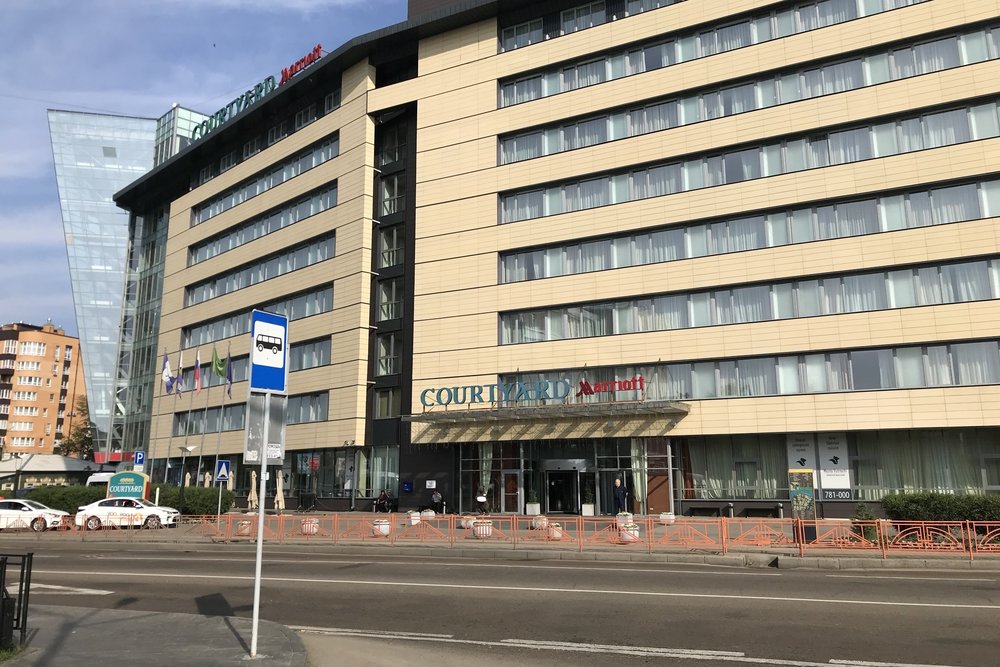
Courtyard by Marriott Irkutsk City Centre
Having arrived at 1pm, we spent the remainder of the first day relaxing in the hotel and walking around the immediate area a little, getting re-accustomed to life outside of the locomotive. The next day we’d spend exploring the city of Irkutsk, before heading out to the town of Listvyanka on Lake Baikal on the third day.
The Best of Irkutsk
Irkutsk is a popular stopping-off point along the Trans-Siberian Railway and is known as one of the last major Russian cities before the railway diverges southwards from the main line as the Trans-Mongolian Railway. Most visitors come here in order to visit the nearby Lake Baikal, but the city itself is well worth a day to explore as well.
Quite a few points of interest are concentrated in a small area not far from our Courtyard hotel. Kirov Square is the focal point of the city, a small park with tree-lined paths and a pretty fountain. To its north, a few significant religious buildings occupy the banks along the Angara River, the main waterway that cuts through the city.
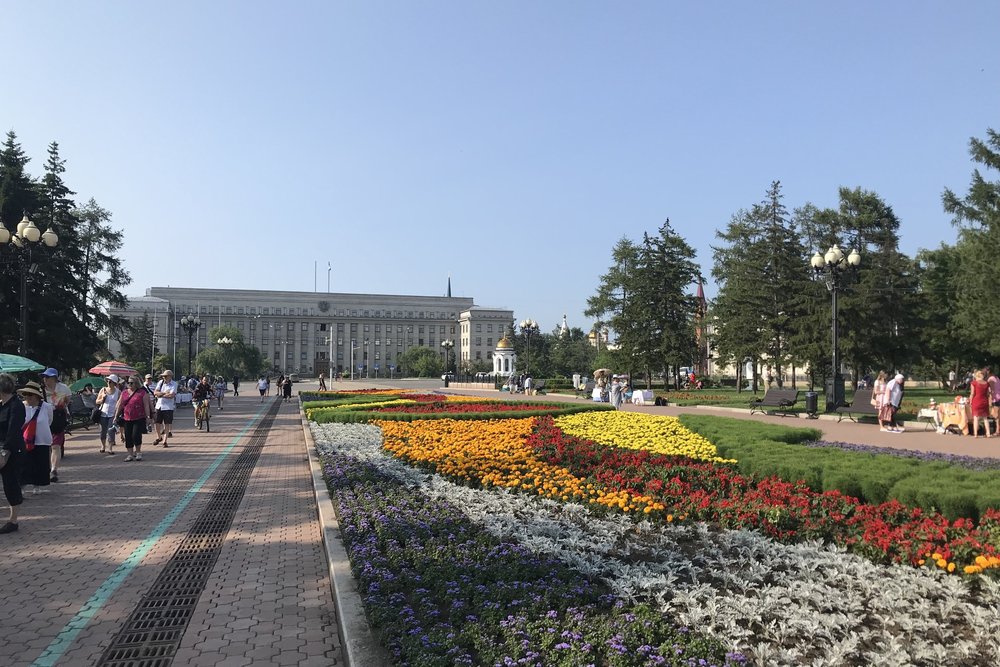
Kirov Square
Further to the north overlooking the water is the colourful Epiphany Cathedral, a notable place of worship in the distinctive Russian Orthodox style
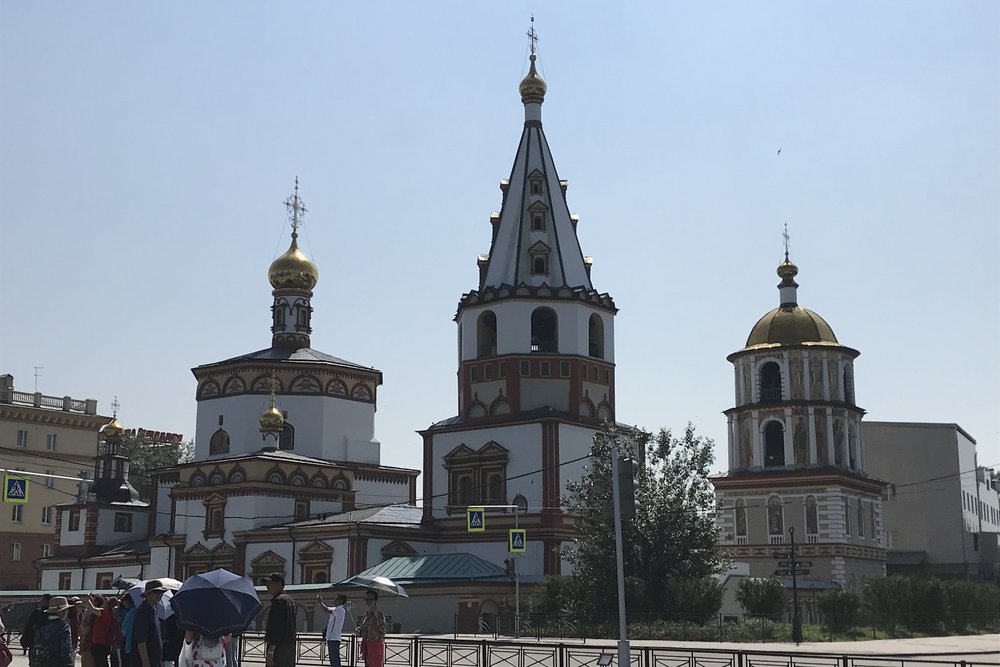
Epiphany Cathedral
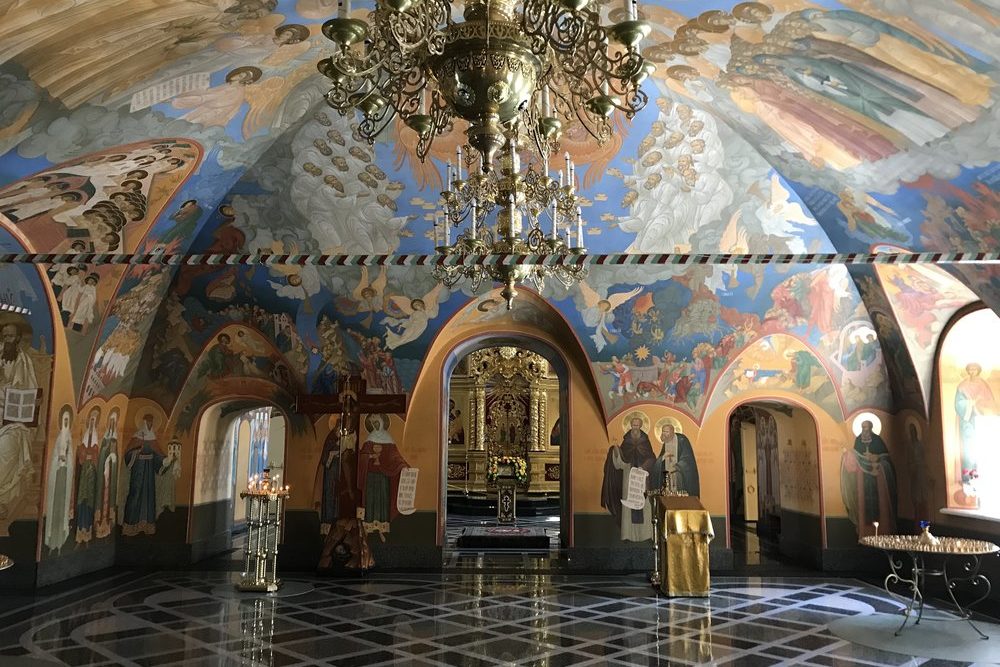
While we were walking around we noticed a large number of Chinese tourists on guided tours. I realized that Irkutsk is a relatively popular destination for Chinese tourism, given the proximity and the fact that Chinese citizens don’t need visas to enter Russia if they’re part of a group tour. We even witnessed quite a few Russian tour guides speaking fluent Mandarin, which is always a bit surprising to see.
Walking south from Kirov Square, you eventually arrive at Irkutsk Central Market, where the city’s primary exchange of goods takes place. Locals shop here for everything from new socks and shoes in the outdoor market to fresh meat and produce on the inside. There are also a few simple eateries serving up snack-sized dishes, so we stopped for a quick lunch.
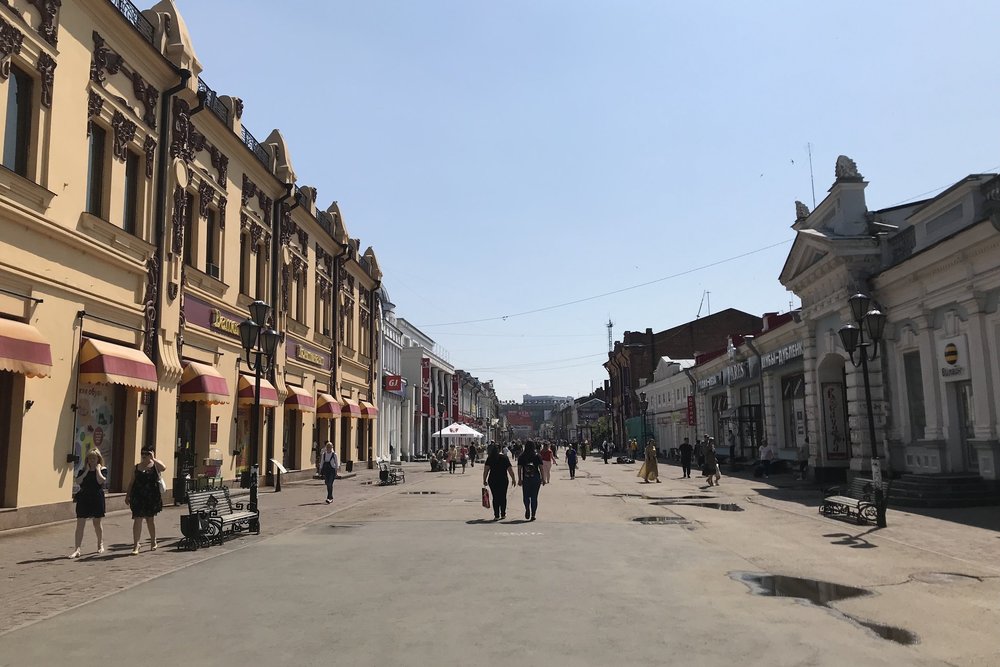
Street scene in Irkutsk
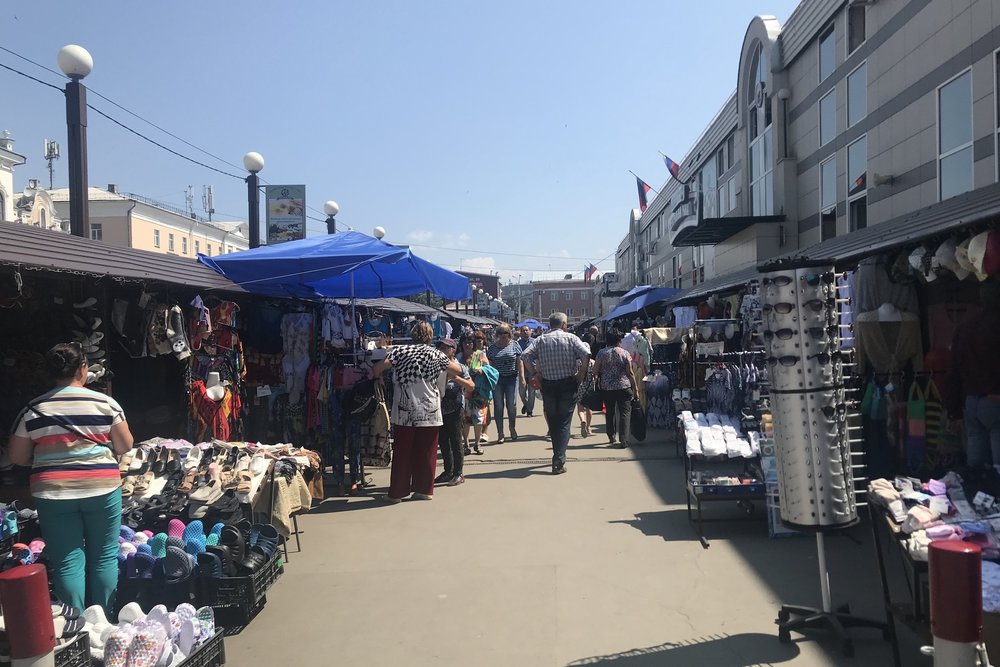
Irkutsk Central Market
The market is also a transportation hub, with most of Irkutsk’s bus routes passing through here (try saying “Irkutsk’s” five times fast). Many marshrutkas, which are like minivans that act as buses for 10-12 people, depart from here to Listvyanka and Lake Baikal as well.
After lunch, we headed west towards the Irkutsk Regional Historical and Memorial Museum of Decembrists. The Decembrists – Russian artists, scientists, nobles, and officers who were exiled to Irkutsk after participating in the Decembrist revolt of 1825 – had brought their culture to this city, shaping it as it stands today.
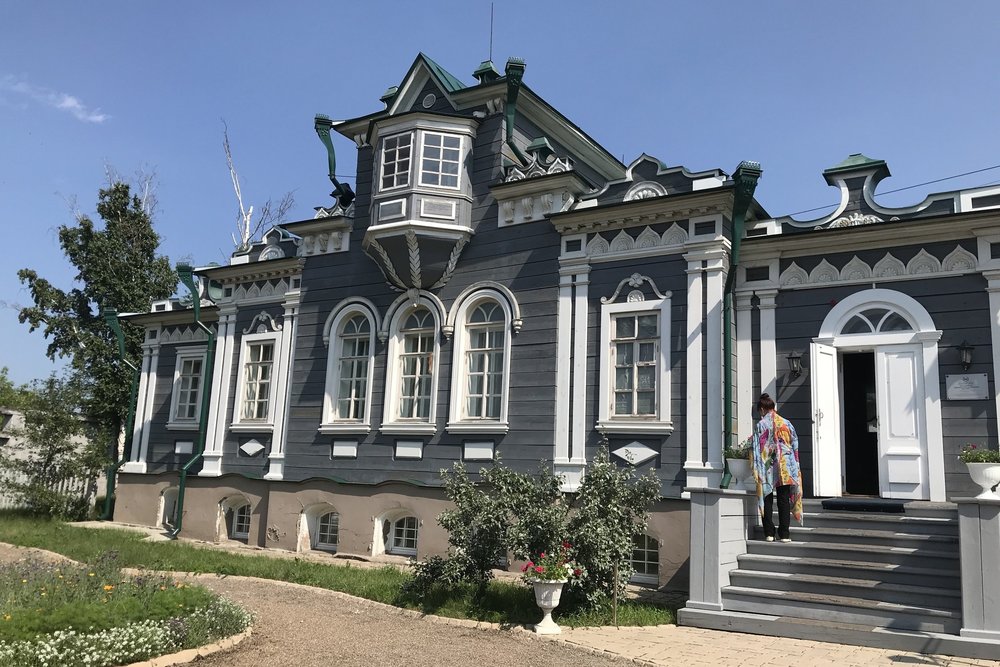
Irkutsk Regional Historical and Memorial Museum of Decembrists
This house was where the Decembrists had gathered in their early years in Irkutsk, and is now a museum that showcases what life was like in those years. I enjoyed wandering among its halls, and while most of the text was in Russian, I certainly found the occasional English translation to be very helpful.
The last place we ventured to was the Our Lady of Kazan Church on the outskirts of town. I recommend taking the bus there, since the walk brings you through some rather decrepit neighbourhoods. We found quite a few streets in Irkutsk where the houses looked like they were about to collapse; compared to somewhere like Novosibirsk, which still had a big-city feel, Irkutsk is definitely smaller and less well-kept.
The walk was pretty worthwhile, though, because the Kazan Church is simply stunning. The firebrick red exterior, topped with baby-blue domes and cupolas with ornate cross-hatched patterns, is almost brazen in its beauty. As a traveller, I’m pretty indifferent to the abundance of churches and cathedrals in Western Europe, but I have to say that I was very captivated by the various extremely colourful places of worship I encountered along this trip in Russia.
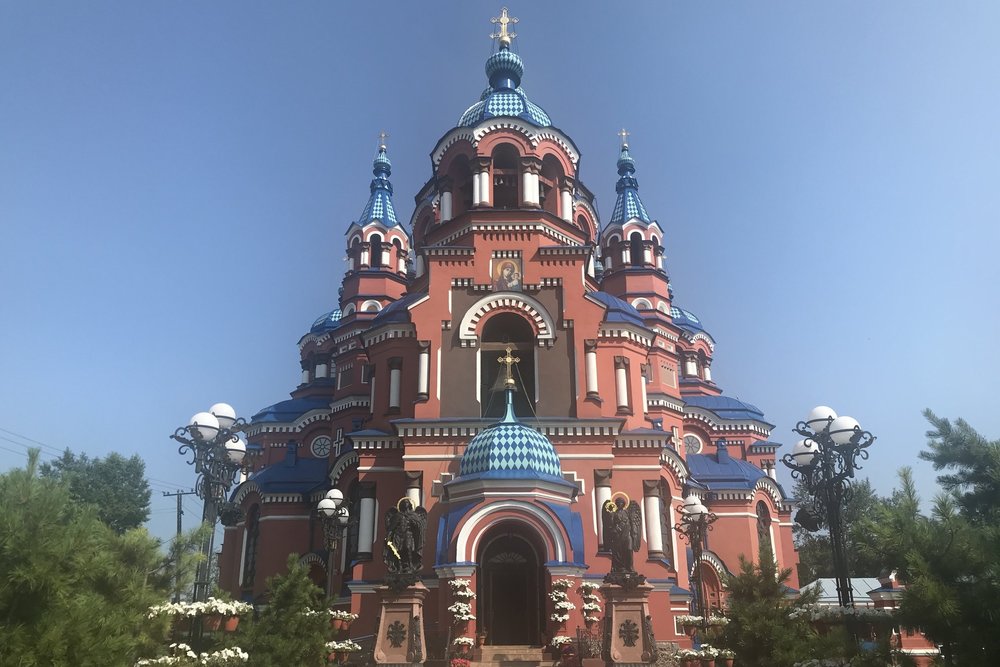
Our Lady of Kazan Church
Lake Baikal: The Pearl of Siberia
Lake Baikal is an absolute must-do along any Trans-Siberian journey, and we dedicated an entire day to exploring it. Nevertheless, that may not have been enough – the lake is simply gigantic, and in order to truly experience it you’d need to allocate at least two or three days. We didn’t have that luxury this time around, and so we only ventured as far as Listvyanka, the town on the lake that’s closest to Irkutsk.
You can take a marshrutka down to Listvyanka from Irkutsk Central Market – it cost about 140 RUB ($7) one-way per person and is about an hour’s ride. Alternatively, you can also catch a boat or hydrofoil down the Angara River.
Listvyanka is a beautiful small town nestled in the foothills as the terrain slopes down to meet Lake Baikal. The small beach is full of stones, but that shouldn’t stop you from buying some smoked Baikal omul from the nearby market, sitting down for a picnic, and taking in the expansive views across the mirror-like surface of the water.

Listvyanka, Irkutsk Oblast, Russia
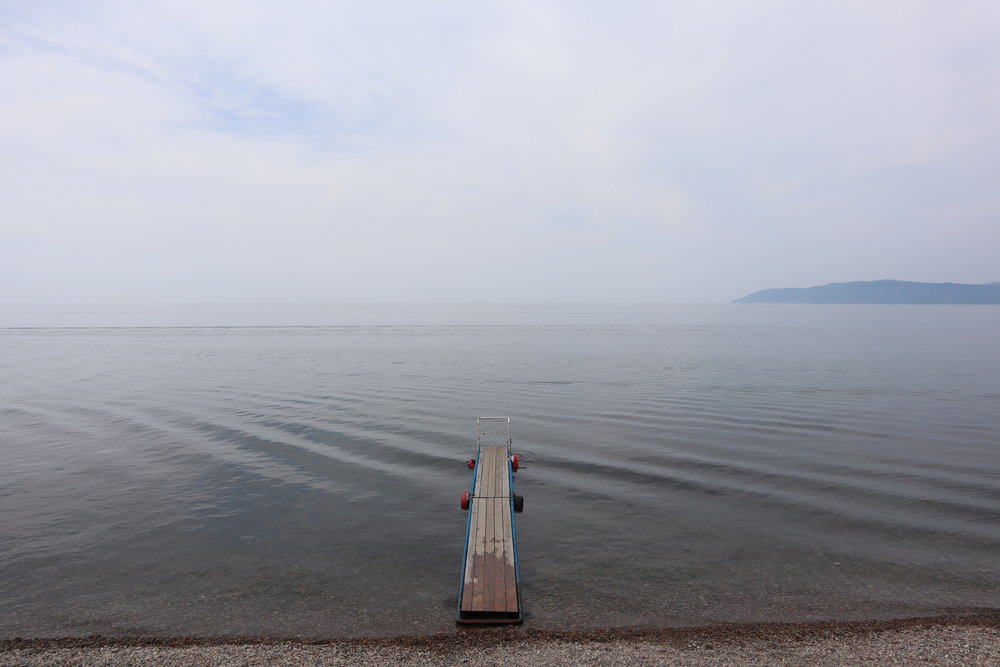
Lake Baikal
We sat for about half an hour as we ate a picnic lunch. The lake is a popular getaway for locals, and we saw many Russian families bringing their children for a day out despite the foggy weather. The Russian family who sat next to us was particularly nice, even offering to share their food with us.

Beach in Listvyanka
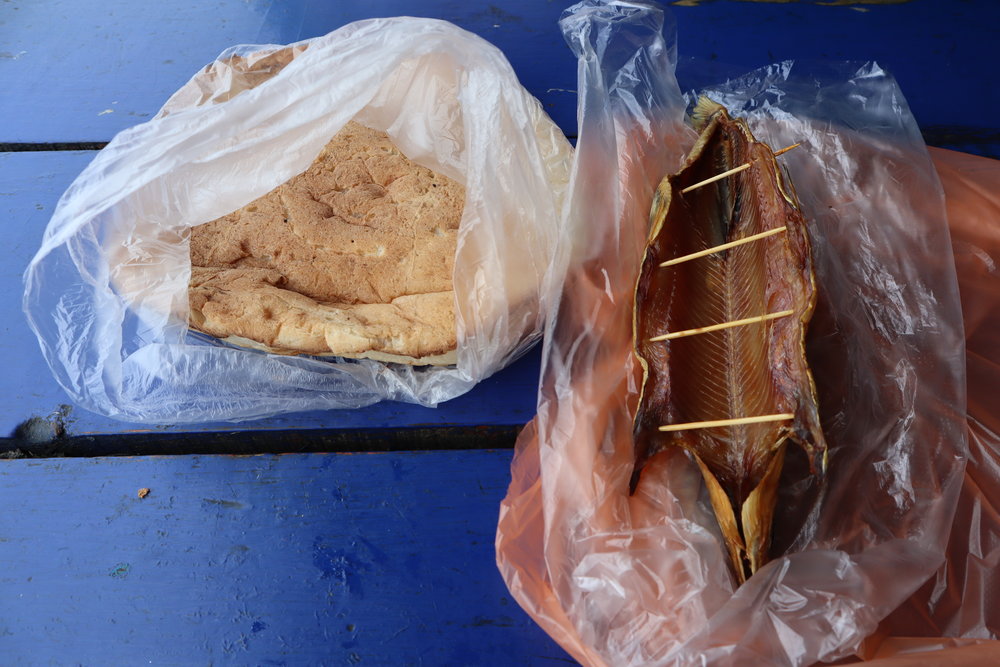
Baikal omul (smoked fish)
If you’re an outdoorsy person, you should definitely check out the Great Baikal Trail. The tourist infrastructure around this area still hasn’t developed to its full extent, so the first walking trails were only recently cultivated by the Great Baikal Trail conservatory project.
If you bring some gear with you, you can definitely make the five-to-eight-hour hike through the woods and mountains over to Bolshie Koty in the north. Despite starting out in the dense woodland near Listvyanka, much of this trail in fact runs along the coastline, providing spectacular views.
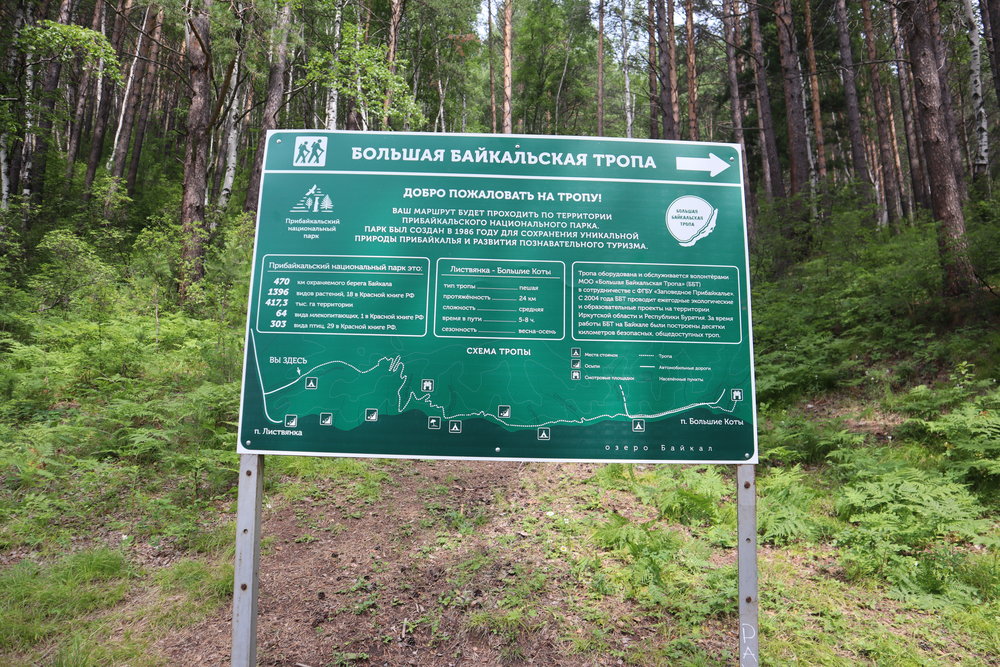
Beginning of the Great Baikal Trail
Jessica and I ventured down the trail for about half an hour before realizing that we weren’t nearly well-prepared enough to complete it, so we headed back. Instead, we decided to do a hike up a nearby hill instead and enjoy the views from the top. A few kilometres back up along the road to Irkutsk, you’ll encounter the Baikal Museum, and that’s where the road leading up the hill can be found.
There’s a chairlift that brings you up to the very top, where you can see Lake Baikal disappear into the horizon in every direction.
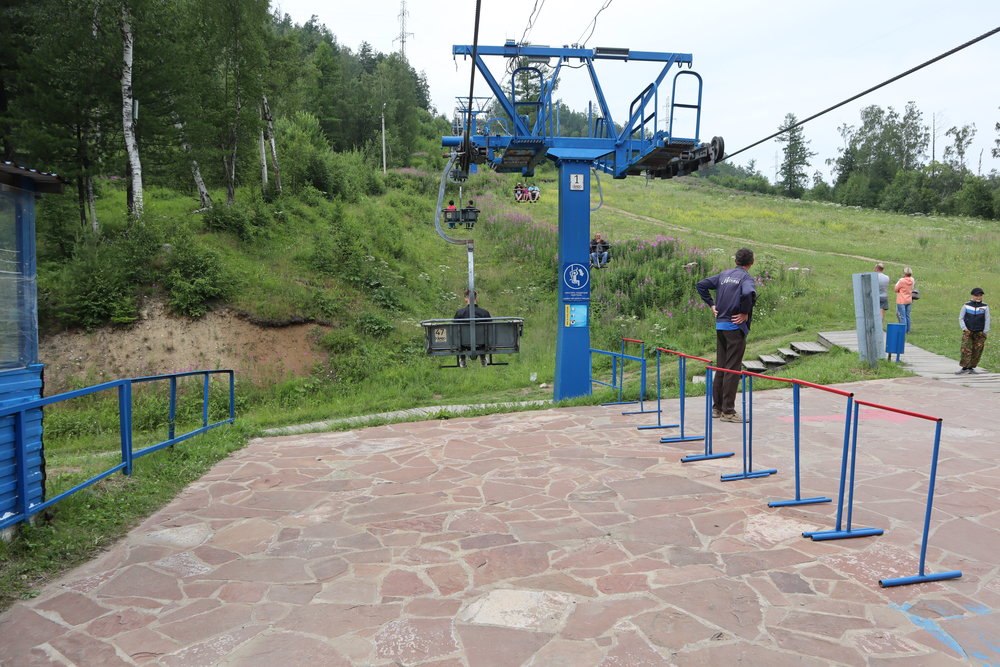
Chairlift up the hill
The sheer vastness of this lake was quite unbelievable, and the only thing that makes you certain it’s not in fact an ocean is the incredible stillness of the water. The weather was foggy but calm, and the only perturbations on the surface of the water came from the slow-moving vessels in the lake.
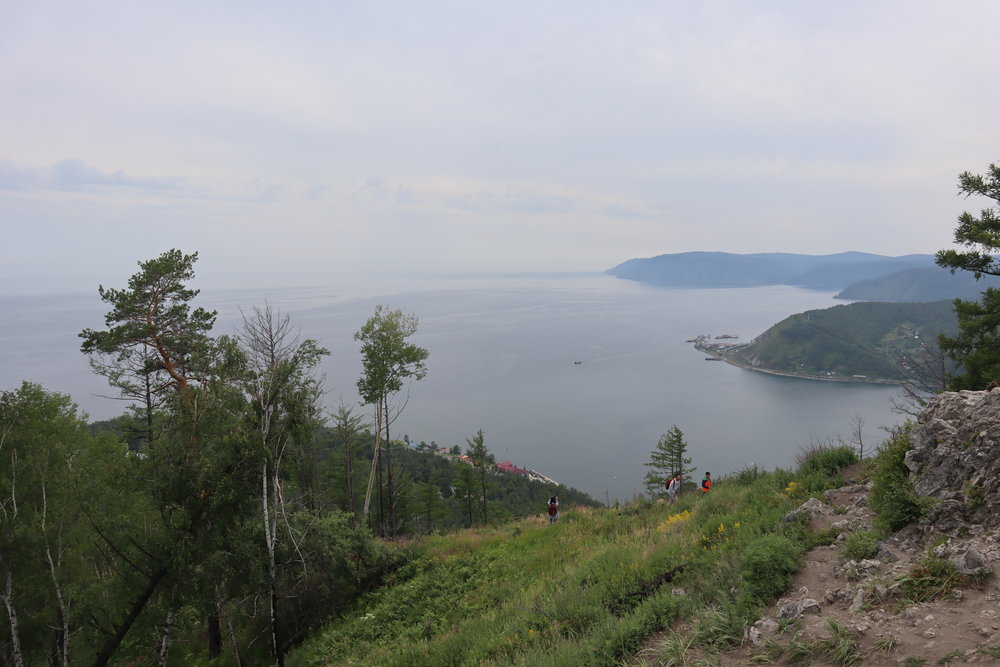
Views of Lake Baikal
To get down the mountain, you can take the chairlift again, or you can take the zipline through the trees for a quick ride down. I’m not usually one to shy away from adrenaline, but the zipline setup looked pretty haphazard to me, so I avoided it.
Throughout the day, I had my gaze fixated on the calm, endless waters of Lake Baikal for long periods. It’s the world’s oldest, deepest, and largest by volume, and it houses thousands of species of plants and animals, many of which are endemic to it. As I watched the glimmer of the water, I couldn’t help but feel a deep connection to the earth and a sense of profound wonder at the natural world around us.
I was glad to have dipped my hands into its waters, but there’s definitely much more to discover about Lake Baikal. Next time, we’ll definitely have to conquer the Great Baikal Trail and stay overnight on Olkhon Island, the island bound within Lake Baikal and the spiritual home of the indigenous shamanic Buryat people of this region.
Conclusion
Lake Baikal was one of the things I was most excited about when embarking on this Trans-Siberian Railway trip, and I’m very glad to have seen it with my own eyes. I do wish I had allocated a few more days in this region, since there’s plenty more things you can do on the lake if you had a few days to explore. For now, though, it was a satisfying way to bring our time in Siberia to an end, as we’d soon jump back on the train – this time the Trans-Mongolian Railway – and complete the final legs of the journey to Ulaanbaatar and Beijing.



















This is a coold article that gives good idea of how to get around in very little time. Good job. Welcome back anytime.
This whole trip has been a very interesting read. I find that I end up checking Wickipedia to get even more info on these many far away and fascinating places. I look forward to the next installment.